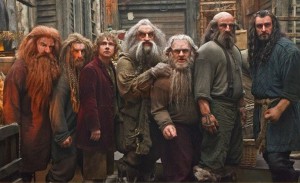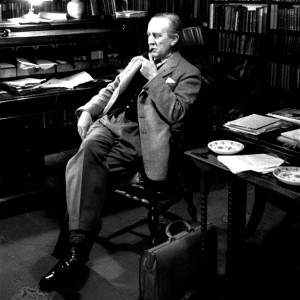 In this piece, Matt Lebovic of The Times of Israel explores the eternally fascinating question of the parallels between Tolkien’s dwarves and the Jewish people. Allegory is almost certainly too strong a word for the relationship, the quotes that Lebovic draws from Letters of J.R.R. Tolkien and various interviews make clear Tolkien’s dislike of the allegorical style (although Leaf by Niggle makes one wonder and Letters #241 and #153 provide conflicting evidence there), and his sincere admiration of the Jewish people.
In this piece, Matt Lebovic of The Times of Israel explores the eternally fascinating question of the parallels between Tolkien’s dwarves and the Jewish people. Allegory is almost certainly too strong a word for the relationship, the quotes that Lebovic draws from Letters of J.R.R. Tolkien and various interviews make clear Tolkien’s dislike of the allegorical style (although Leaf by Niggle makes one wonder and Letters #241 and #153 provide conflicting evidence there), and his sincere admiration of the Jewish people.
Edit to quote from Letter #153:
…I might say in my myth I have used ‘subcreation’ in a special way (not the same as ‘subcreation’ as a term in criticism in art, though I tried allegorically [emphasis mine] how that might come to be taken up into Creation in some plane in my ‘purgatorial’ story Leaf by Niggle (Dublin Review 1945))…
Couple of quick points of nit-picking: the Company has 13 dwarves, not 12, it’s Middle-earth not Middle Earth, and arguably Khazad-dûm (Moria) is more accurately the spiritual home of the Dwarves (especially of the Longbeards of Durin’s line) rather than Erebor. As a point of trivia, the Dwarves eventually reclaim Khazad-dum under Durin VII sometime in the Fourth Age. As for the Arkenstone, some people hold that, within the Legendarium, it might have been a Silmaril, but that seems unlikely to this writer.
Are Tolkien’s dwarves an allegory for the Jews?
As with its predecessor, last year’s “An Unexpected Journey,” the latest 161-minute romp through J.R.R. Tolkien’s Middle Earth will inspire some fans to see parallels with Jewish history – mostly through the epic tale of twelve displaced dwarves, hell-bent on reclaiming their homeland from the dragon Smaug.
When Tolkien published “The Hobbit” in 1937, the Zionist dream of a Jewish homeland – not to mention the Holocaust – was still on the horizon. Educated at Oxford, devout Roman Catholic Tolkien served as a signals officer during World War I, and saw action at the notorious Battle of the Somme, one of humanity’s bloodiest.
Written as a children’s book, “The Hobbit” has long been probed by scholars for allegory, including the influence of Tolkien’s war years on the plot.
Another fascinating parallel for some Tolkienites – the official word for Tolkien fans – is between the fictional dwarves of Middle Earth and real Earth’s Jews, in both their history and culture.
 More than three decades after publishing “The Hobbit,” Tolkien spoke about the Jewish-dwarvish connection during a BBC interview.
More than three decades after publishing “The Hobbit,” Tolkien spoke about the Jewish-dwarvish connection during a BBC interview.
“I didn’t intend it, but when you’ve got these people on your hands, you’ve got to make them different, haven’t you?” said Tolkien during the 1971 interview. “The dwarves of course are quite obviously, wouldn’t you say that in many ways they remind you of the Jews? Their words are Semitic, obviously, constructed to be Semitic. The hobbits are just rustic English people,” he said. [Note: you can listen to a recording of this interview in full on Youtube here.]
According to Tolkien scholar John Rateliff, author of a two-volume “Hobbit” history published in 2007, Tolkien drew inspiration from Hebrew texts and Jewish history when developing the dwarves. As craftsmen exiled from a bountiful homeland, the dwarves spoke both the language of their adopted nations and – among themselves – a Hebrew-influenced tongue developed by Tolkien.


